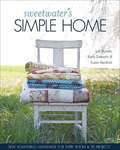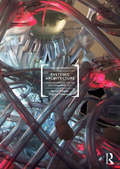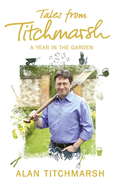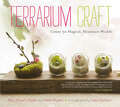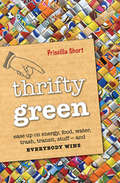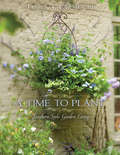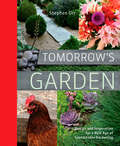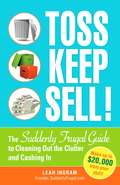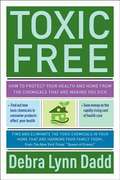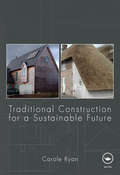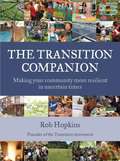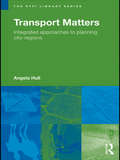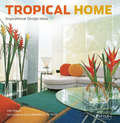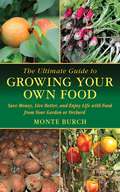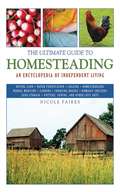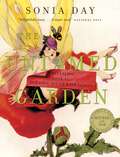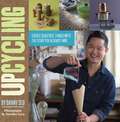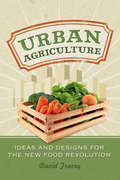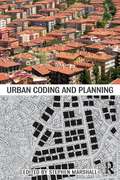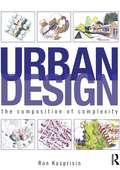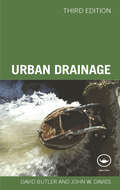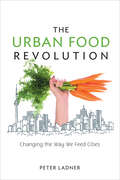- Table View
- List View
Sweetwater's Simple Home: Sew Something Handmade for Every Room, 35 Projects
by Lisa Burnett Karla Eisenach Susan Kendrick&“Sweetwater&’s simple style shines through . . . from a laundry hamper to a covered office chair and quilts for the nursery or the master bedroom.&” —Quilts & More A house becomes a home with handmade touches added to every room. With inspiring designs from the mother-daughter trio behind Sweetwater, it&’s easy to add expressive touches everywhere, from the dining room to the bedroom to the laundry room. Keep it simple and surround yourself with things you absolutely love. 35 beginner-friendly projects, including quilts, pillows, table linens, and accessories—many can be made in a day or lessFresh, modern ideas for making things pretty and practicalBring Sweetwater&’s popular signature style to all your sewing and craft projectsLearn simple, creative techniques for decorating with appliqué, stenciling, stamping, and embroidery&“[A] lovely, lovely book. Actually, even though the projects are all fairly straightforward it&’s one of the nicest quilting books I&’ve looked at in a long while and the photos are fabulous . . . My favorites were the scalloped placemats, the lampshade, the work chair slipcover, tray liner, and some of the bags. All of these are straightforward enough for any beginner, but even for someone whose been sewing as long as I have they would make great additions to brighten up the home.&” —Run Quilt Knit Write&“If you like simple projects with a modern approach, a few (or a lot) of projects in this book will appeal to you . . . All of these projects are &‘beginner-friendly,&’ which is nice for beginners but also nice for those among us who are looking for a fast project (need a quick gift?).&” —Portland Modern Quilt Guild
Systemic Architecture: Operating Manual for the Self-Organizing City
by Marco Poletto Claudia PasqueroThis is a manual investigating the subject of urban ecology and systemic development from the perspective of architectural design. It sets out to explore two main goals: to discuss the contemporary relevance of a systemic practice to architectural design, and to share a toolbox of informational design protocols developed to describe the city as a territory of self-organization. Collecting together nearly a decade of design experiments by the authors and their practice, ecoLogicStudio, the book discusses key disciplinary definitions such as ecologic urbanism, algorithmic architecture, bottom-up or tactical design, behavioural space and the boundary of the natural and the artificial realms within the city and architecture. A new kind of "real-time world-city" is illustrated in the form of an operational design manual for the assemblage of proto-architectures, the incubation of proto-gardens and the coding of proto-interfaces. These prototypes of machinic architecture materialize as synthetic hybrids embedded with biological life (proto-gardens), computational power, behavioural responsiveness (cyber-gardens), spatial articulation (coMachines and fibrous structures), remote sensing (FUNclouds), and communication capabilities (Ecological Footprint Grotto). Supporting the authors’ own essays and projects are contributions from key innovators in contemporary architecture and urban design: Michael Batty, Andrew Hudson-Smith, Michael Weinstock and Patrik Schumacher.
Tales From Titchmarsh
by Alan TitchmarshBritain's favourite gardener Alan Titchmarsh has also been the most popular contributor to Gardeners' World magazine for the last twenty years.This collection of his very best columns, demonstrates just why he is regularly voted the readers' favourite. His brilliant writings are, in turn, practical - just how far back should we prune our roses? - opinionated - I always rail at people who go out on a Sunday afternoon to tidy their gardens. I mean, a garden is not a sock drawer - cheeky - I have a theory that gardeners grow to look like their soil and wistful - You've got to be a bit of a dreamer to get the most out of your garden.So lay down your trowel, take off your wellies, sit back and enjoy a bit of quintessential Titchmarsh.
Tales from Titchmarsh
by Alan TitchmarshBritain's favourite gardener Alan Titchmarsh has also been the most popular contributor to Gardeners' World magazine for the last twenty years.This collection of his very best columns, demonstrates just why he is regularly voted the readers' favourite. His brilliant writings are, in turn, practical - just how far back should we prune our roses? - opinionated - I always rail at people who go out on a Sunday afternoon to tidy their gardens. I mean, a garden is not a sock drawer - cheeky - I have a theory that gardeners grow to look like their soil and wistful - You've got to be a bit of a dreamer to get the most out of your garden.So lay down your trowel, take off your wellies, sit back and enjoy a bit of quintessential Titchmarsh.
Terrarium Craft: Create 50 Magical, Miniature Worlds
by Kate Baldwin Amy Bryant Aiello Kate BryantA terrarium is nothing less than a miniature world—one that you can create yourself. It might be a tiny rainforest, with lush foliage and bright tropical flowers. Or a desert, with strange succulents planted among colorful stones. Or a Victorian fernery. Or a minimalist composition with a single, perfect plant.Or it might not contain any plants at all. It might be made with crystals, feathers, bones, seashells, bits of wood, porcelain trinkets—anything that catches your fancy and helps create a mood or look. Whatever they contain, terrariums are the ultimate in modern, affordable, easy-care décor.Terrarium Craft features fifty original designs that you can re-create or use as inspiration for your own design. Each entry comes with clear step-by-step directions on how to assemble and care for your terrarium. You’ll also find helpful information about selecting a container, using appropriate materials, choosing the right plants, and maintaining your terrarium. (Hint: It’s easy! In fact, many terrariums are self-sustaining, requiring no maintenance whatsoever!)
Thrifty Green: Ease Up on Energy, Food, Water, Trash, Transit, Stuff—and Everybody Wins
by Priscilla ShortHow one woman&’s year living off the grid made her think about conservation in a whole new way—and how to apply what she learned to your own lifestyle. Priscilla Short lived off the grid for a year in a strawbale house in Taos, New Mexico, with no electricity, no running water, and a wood-burning stove for heat. At the end of the year, Short returned home to Denver committed to making a smaller ecological footprint by consuming less and conserving more. In Thrifty Green, Short offers a unique, resource-by-resource approach that shows us that the best way to practice conservation, the real win-win, involves saving money as we lighten up. This book will help you make crucial decisions about transportation, heat, power, light, water, food, and garbage. Peppered with examples of people living both on and off the grid, eccentric and ordinary, who are deliberately making choices to live with less, Thrifty Green is much more than a how-to book. It is a conscientious guide to the art of going green that includes a wealth of terrific tips, fun facts, and straightforward strategies that will make you think about conservation in a whole new way.
A Time to Plant
by James T. Farmer IIIA vital young voice in the gardening scene teaches a new generation of Southerners to love gardening and to make it a focal point of their lifestyle. James Farmer III teaches respect for the age-old rules of flower and vegetable gardening in the Deep South (e.g., May is the time for pruning), in a fresh voice that resonates love of life and entertaining at home. Also included are delicious recipes for seasonal meals, as well as suggestions for floral arrangements and centerpieces from the garden.
Tomorrow's Garden: Design and Inspiration for a New Age of Sustainable Gardening
by Stephen OrrWith a keen eye for aesthetics matched by a strong concern for the environment, garden expert Stephen Orr has developed a sense of what a modern garden should be: small, visually pleasing, and responsible. In Tomorrow's Garden, he presents gardens in 14 American cities that have been scaled back and simplified without sacrificing beauty or innovative design.A devoted supporter of the organic gardening movement, Orr advises gardeners to think about their gardens as part of an interconnected whole with the surrounding environment--with an eye to water usage, local ecology, and preservation of resources. However, for those who are afraid that a sustainable garden means a lack of flora and fauna, Orr believes that a garden, first and foremost, should be a thing of beauty. He encourages flower lovers to plant flowers, and he showcases gardens filled with traditional and exotic plants that are designed with both visual appeal and the environment in mind.With detailed case studies, stunning photographs, and an appendix of resources and information to help gardeners achieve their ecological best, Tomorrow's Garden will teach you the true definition of sustainability and show you how to create beauty without excess in the 21st century and beyond.
Toss, Keep, Sell!
by Leah IngramThe American house is one cluttered place. Frugal folks need to get their homes in order and find ways to make money from the junk they no longer need or want. That's where this book comes in!Organized by rooms of the house and tasks of the day, this book becomes a veritable clutter checklist. Each chapter in this reader-friendly guide features:Cashing In: A profile of everyday people who have earned big while clearing outQuick Clutter Challenge: Easy ways for you to declutter a space in thirty minutes or lessA Keep, Toss, Sell Chart: A visual organizer to help get every room of the house under controlCash Back in This Chapter: What better way to motivate you than to point out potential earnings from one chapter's worth of tips?You can forget paying big bucks for a professional organizer. With Leah Ingram as your guide, you'll have extra money--and a home you can be proud of--in no time!
Toss Keep Sell!
by Leah IngramLooking for a way to make money and get your house in order? Toss, Keep, Sell! teaches you how to turn the junk you haven't used (or even seen!) in ages into cash-while organizing your home at the same time. To make decluttering easier than ever, each orderly chapter is organized by rooms and daily tasks and features: Cashing In: A profile of everyday people who have earned big while clearing out Quick Clutter Challenge: Easy ways for you to declutter a space in thirty minutes or less A Keep, Toss, Sell Chart: A visual organizer to help get every room of the house under control Cash Back in This Chapter: What better way to motivate you than to point out potential earnings from one chapter's worth of tips? Under financial and organization whiz Leah Ingram's guidance, you could earn up to $20,000 while organizing your home. So stop wasting your time searching for lost items and start finding out how you can hit it big-without missing a thing!
Toxic Free
by Dadd Debra LynnFrom the The New York Times'"Queen of Green" comes the ultimate guide for finding and eliminating the toxic chemicals in your home today. There is no longer any question that consumer products contain toxic chemicals harmful to our families. But how do we protect ourselves, and where do we start? In Toxic Free, Debra Lynn Dadd, hailed by The New York Times as the "Queen of Green," discusses the hidden toxic chemicals already present in our homes, their varying degrees of danger, and precise, proven methods for eliminating them from our lives in a cost- effective, environmentally friendly way. Are you suffering from unexplained headaches, fatigue, or depression? Are you worried about the link between chemicals in the home and the rising rate of cancer? Or are you just looking to save money (and the planet in the process)? From tips and do-it-yourself formulas to world-class research and in-depth exploration and explanation, this book provides: a basic understanding of how toxic chemicals in consumer products affect your health; all the tools you need to remove these toxins from your home and body- starting today; and helpful guides on how to immediately save money on home-care products, as well as on the rapidly rising cost of your health care. .
Traditional Construction for a Sustainable Future
by Carole RyanSince the spread of classical design and construction amongst the upper echolons of British society in the late seventeenth century, traditional construction methods have largely fallen by the wayside. Centuries later, as the construction industry faces up to its environmental responsibilities, this book explores its rich and ancient tradition to provide tried and trusted solutions to modern day construction problems. By way of introduction, the ancient and historical lifestyles that dictated the nature of traditional construction are explored, before focussing on its health and ecological benefits. As well as cultural background, this book includes a detailed scientific description of traditional building materials and their constituents which draws a sharp contrast with modern petrochemical-based materials. The studies of traditional buildings included reveal the sustainability of features such as natural ventilation and breathing walls, and comparisons with modern construction methods show how they could prevent 'sick building syndrome'. The author argues that maintenance for long life, by contrast with the modern concept of life-cycle costing, is at the nub of sustainability and underlies the contribution traditional building construction can make to tackling climate change. Over 250 original photos, and over fifty bespoke diagrams illustrate the features, techniques, and characteristics of traditional construction that could make such a valuable contribution to the industry today. The inclusion of a close study of how these methods relate to British building regulations makes this book a practical guide for construction professionals, as well as an authoritative resource for students and policy-makers.
The Transition Companion
by Rob HopkinsIn this illustrated resource for general readers, Hopkins, founder of the UK'S Transition Movement, advocates a grassroots, community-led response to climate change and oil dependence. The first part of the book explains the rationale behind the need for a new paradigm for communities, reviewing the current and future consequences of oil dependence, climate change, and economic problems, and describes the transition movement's vision for revived communities. The book then describes real initiatives that work for lower energy use, ecological sustainability, and reliance on local economies. Hopkins gives advice on how to start and maintain a transition initiative, covering ingredients for success such as respectful communication, running effective meetings, forming a legal entity, starting local food initiatives, encouraging entrepreneurship, and using less energy. The book's color layout includes color photos and color-coded sections. Annotation ©2012 Book News, Inc. , Portland, OR (booknews. com)
Transport Matters: Integrated Approaches to Planning City-Regions (RTPI Library Series)
by Angela HullAddressing the principles of sustainability, spatial planning, integration, governance and accessibility of transport, this book focuses on the problem of providing efficient and low energy transport systems which serve the needs of everybody. It explores many of the new arguments, ideas and perceptions of mobility and accessibility in city-regions. Looking at evidence from Denmark, Sweden, The Netherlands, Germany and the UK, it considers the meaning of the key concepts of sustainable accessibility, the spatial planning model, and integrated territorial policies.
Tropical Home: Inspirational Design Ideas
by Kim Inglis Luca Invernizzi TettoniThis Asian interior design and architecture book showcases the best luxury homes and interior spaces of the Pacific region.Asia has emerged in the last couple of decades as the global leader in tropical villa design. <P><P>With innovative indoor/outdoor architecture engineered to facilitate relaxed, al fresco lifestyles, there are myriad solutions to suit every taste and pocket. Featuring hundreds of homes, garden estates, hotels, restaurants and more from India to Indochina, Indonesia to Sri Lanka, the design book gives a tantalizing glimpse of the latest trends for tropical wannabe decorators.Full-color photography of interiors and exteriors, garden features, pools and pavilions, as well as decorative details and fashion forward furniture, is accompanied by insightful text that traces past history and present trends, and predicts what is to come, design wise, in the future.
The Ugly Vegetables
by Grace LinTHE UGLY VEGETABLES springs forth with the bright and cheerful colors of blooming flowers and lumpy vegetables. Grace Lin's playful illustrations pour forth with abundant treasures. Complete with a guide to the Chinese pronunciation of the vegetables and the recipe for ugly vegetable soup! Try it . . . you'll love it, too!
The Ultimate Guide to Growing Your Own Food: Save Money, Live Better, and Enjoy Life with Food from Your Garden or Orchard (Ultimate Guides)
by Monte BurchGrowing your own food is a hot topic today because of the high cost of transporting food long distances, the heightened problem of diseases caused by commercially grown foods, and concerns of the overuse of chemicals in mass food production. Many people--from White House executives to inner-city kids--have recently discovered the benefits of homegrown vegetables and fruits. Community gardens, and even community canning centers, are increasingly popular and have turned roof-top gardening into a great and healthy food source. And on a smaller scale, some plants can even be grown in containers for the smallest backyard or patio. The possibilities for growing your own food are endless! The Ultimate Guide to Growing Your Own Food informs you how to grow all types of vegetables, fruits, and even grains on your own land or in any small space available to you and your family. Also included is information on specific health benefits, vitamins, and minerals for each food, as well as detailed instructions for fall and winter food growing. Learn how to grow for your family, harvest and store all types of home-grown produce, and find joy in eating foods planted with your own hands.
The Ultimate Guide to Homesteading: An Encyclopedia of Independent Living (The Ultimate Guides)
by Nicole FairesCan you make your own bread (sans bread machine)? Grow a garden all winter? What can you use instead of toilet paper? What if the power went out for a month? What if the grocery store closed? Can you make a solar oven? Store food without electricity? Raise a water buffalo? Make fine linen from stinging nettle? Make your own shampoo? Deliver a baby? Is it possible to be totally self-sufficient? This massive, full-color book answers all these questions and thousands more and includes checklists, diagrams, and instructions on how to buy a sheep. All of the information included meets these criteria: It is something that anyone can do, without special training. It can be done with relatively few supplies or with stuff you can make yourself. It has been tried and tested--either by the author, the military, doctors, or other homesteaders. The Ultimate Guide to Homesteading is not a storybook or a cookbook. It is a practical guide with nitty-gritty details on everything a homesteader can do, step-by-step with hundreds of color illustrations and pen and ink sketches. You can do it! This book can help.
The Untamed Garden: A Revealing Look at Our Love Affair with Plants
by Sonia DayWhich suggestive plant caused a queen to faint when it was presented to her at court? What was the original French name for the Great Maiden's Blush rose that had the Victorians blushing? Why are figs and pomegranates thought to be the real forbidden fruit that led Adam and Eve into temptation?In this delightful gift book, master gardener Sonia Day brings together delicious tidbits from myth, history, botany, and plant lore to reveal how plants have seduced our hearts, minds, and bodies throughout the ages. Organized in thematic chapters that loosely follow the arc of a love affair, the book journeys from "Innocence" (the notion of a virgin being "deflowered" originated with the belief that flowers were pure and sexless), through such stages as "Flirtation," "Seduction," "Lust," "Deception," and "Rapture." Scattered throughout are love potions, examples from the Victorian "language of flowers," and charming anecdotes, all told in Day's delightfully irreverent and conversational voice. Gorgeously designed and featuring full-colour photos and illustrations throughout, this is a sumptuous tribute to our enduring fascination with plants that is sure to seduce readers everywhere.
Upcycling: Create Beautiful Things with the Stuff You Already Have
by Danny SeoHave neglected items around your house? They can be the source for exciting craft possibilities! Turn your old leather belts into a cool doormat (or even a briefcase!); worn-out paperbacks into gorgeous bud vases; tennis balls into a quaint country swing; chopsticks into a handsome trivet, and many more.With full-color photos throughout to guide and inspire, Danny shows that it's easy to be crafty, and fun to be budget- and eco-conscious.
Urban Agriculture
by David TraceyUrban Agriculture is packed with ideas and designs for anyone interested in joining the new food revolution. First-time farmers and green thumbs alike will find advice on growing healthy, delicious, affordable food in urban settings. From condo balconies to community orchards, cities are coming alive with crops. Get growing!
Urban Coding and Planning: Urban Coding And Planning (Planning, History and Environment Series)
by Stephen MarshallUrban codes have a profound influence on urban form, affecting the design and placement of buildings, streets and public spaces. Historically, their use has helped create some of our best-loved urban environments, while recent advances in coding have been a growing focus of attention, particularly in Britain and North America. However, the full potential for the role of codes has yet to be realized. In Urban Coding and Planning, Stephen Marshall and his contributors investigate the nature and scope of coding; its purposes; the kinds of environments it creates; and, perhaps most importantly, its relationship to urban planning. By bringing together historical and ongoing traditions of coding from around the world – with chapters describing examples from the United Kingdom, France, India, China, Japan, Australia, South Africa, the United States and Latin America – this book provides lessons for today’s theory and practice of place-making.
Urban Design: The Composition of Complexity
by Ron KasprisinFor planning to be successful, design must mean more than simply blindly following the dictates of legislation and regulation – yet losing sight of the importance of the design process is all too often exactly what has happened. Ron Kasprisin has written a book for students of planning and urban design that reconnects the process of designing with outcomes on the ground, and puts thinking about design back at the heart of what planners do. The book identifies the elements and principles of composition and explores compositional order and structure as they relate to the meaning and functionality of cities. It discusses new directions and methods, outlines the importance of both buildings and the open spaces between them. Mixing accessible theory, practical examples and carefully designed exercises in composition from simple to complex settings, Urban Design is an essential textbook for classrooms and design studios across the full spectrum of planning and urban studies fields. Not only filled with illustrations and graphics of excellent projects, it gives students tools to enable them to sketch, draw, design and above all, to think.
Urban Drainage, Third Edition
by David Butler John DaviesUrban Drainage has been thoroughly revised and updated to reflect changes in the practice and priorities of urban drainage. New and expanded coverage includes: Sewer flooding The impact of climate change Flooding models The move towards sustainability Providing a descriptive overview of the issues involved as well as the engineering principles and analysis, it draws on real-world examples as well as models to support and demonstrate the key issues facing engineers dealing with drainage issues. It also deals with both the design of new drainage systems and the analysis and upgrading of existing infrastructure. This is a unique and essential textbook for students of water, environmental, and public health engineering as well as a valuable resource for practising engineers.
The Urban Food Revolution: Changing the Way We Feed Cities
by Peter LadnerOur reliance on industrial agriculture has resulted in a food supply riddled with hidden environmental, economic, and health care costs and beset by rising food prices. With only a handful of corporations responsible for the lion's share of the food on our supermarket shelves, we are incredibly vulnerable to supply chain disruption.The Urban Food Revolution provides a recipe for community food security based on leading innovations across North America. The author draws on his political and business experience to show that we have all the necessary ingredients to ensure that local, fresh sustainable food is affordable and widely available. He describes how cities are bringing food production home by:*Growing community through neighborhood gardening, cooking, and composting programs*Rebuilding local food processing, storage, and distribution systems*Investing in farmers markets and community supported agriculture*Reducing obesity through local fresh food initiatives in schools, colleges, and universities*Ending inner-city food desertsProducing food locally makes people healthier, alleviates poverty, creates jobs, and makes cities safer and more beautiful. The Urban Food Revolution is an essential resource for anyone who has lost confidence in the global industrial food system and wants practical advice on how to join the local food revolution.Peter Ladner has served two terms as a Vancouver City Councilor. With more than thirty-five years of journalistic experience, he is a frequent speaker on community issues and has a special interest in the intersection of food policy and city planning.
